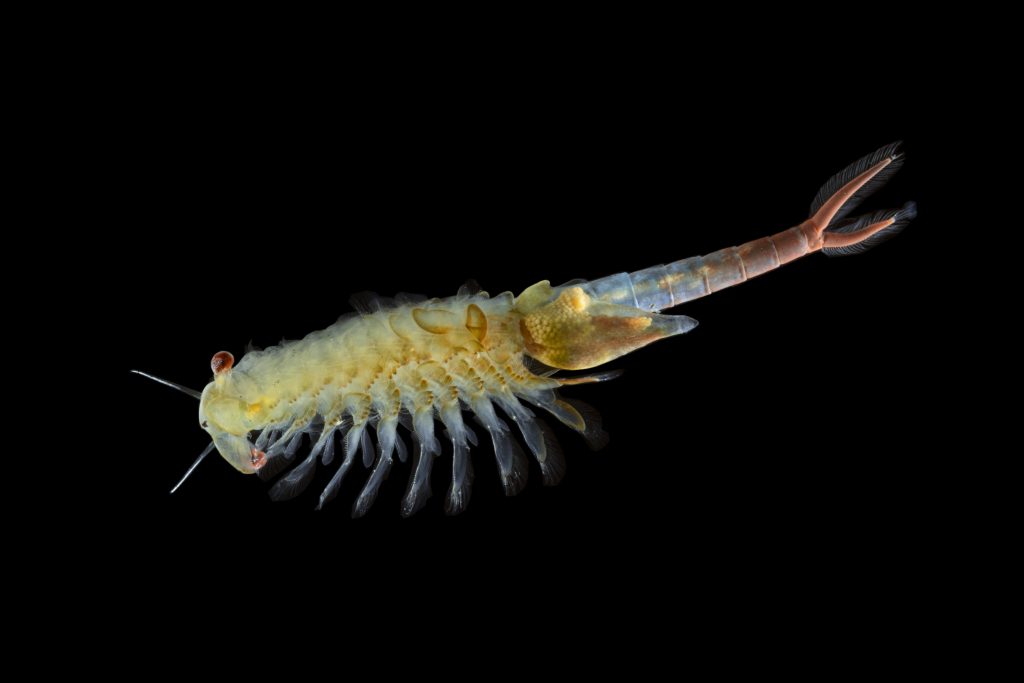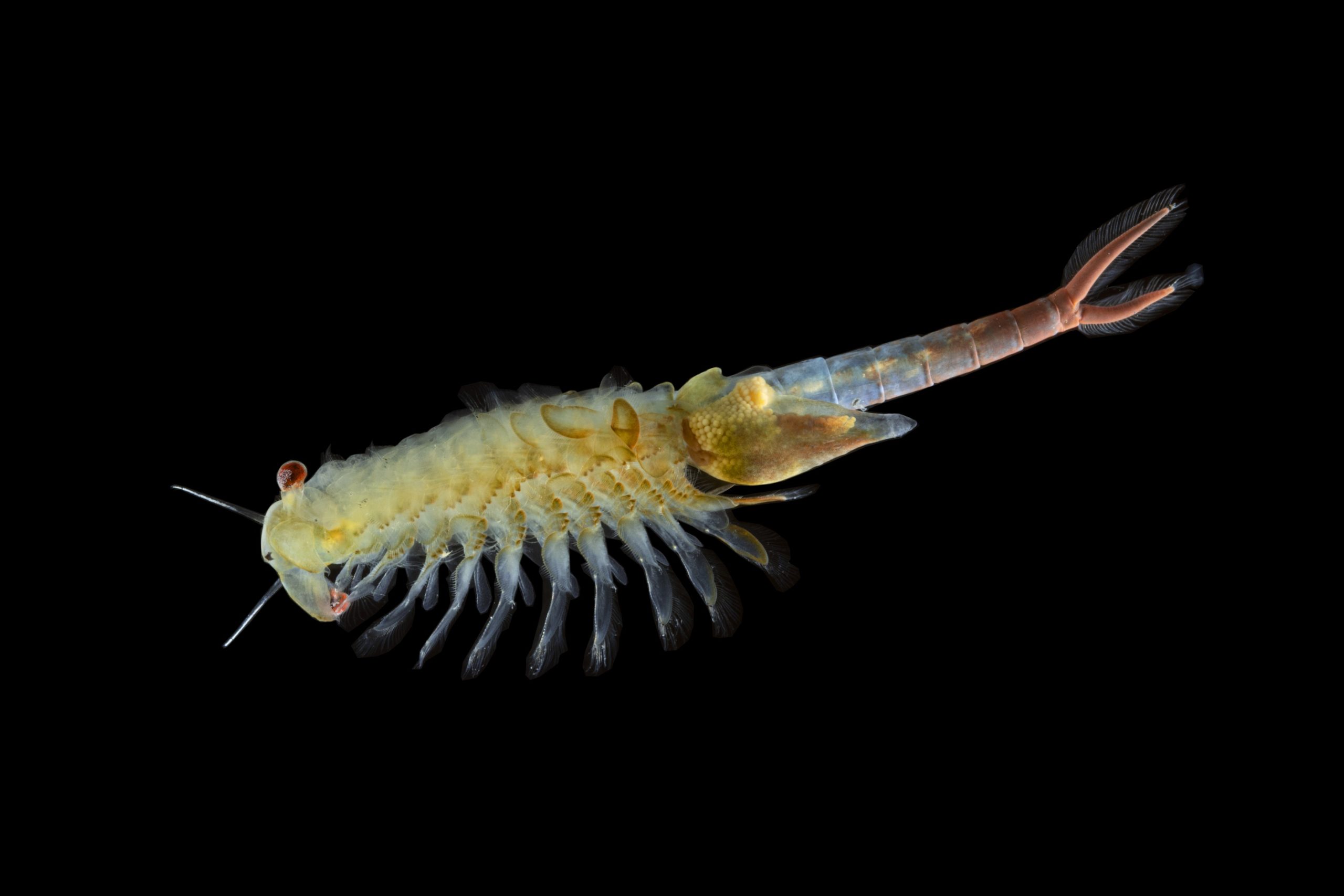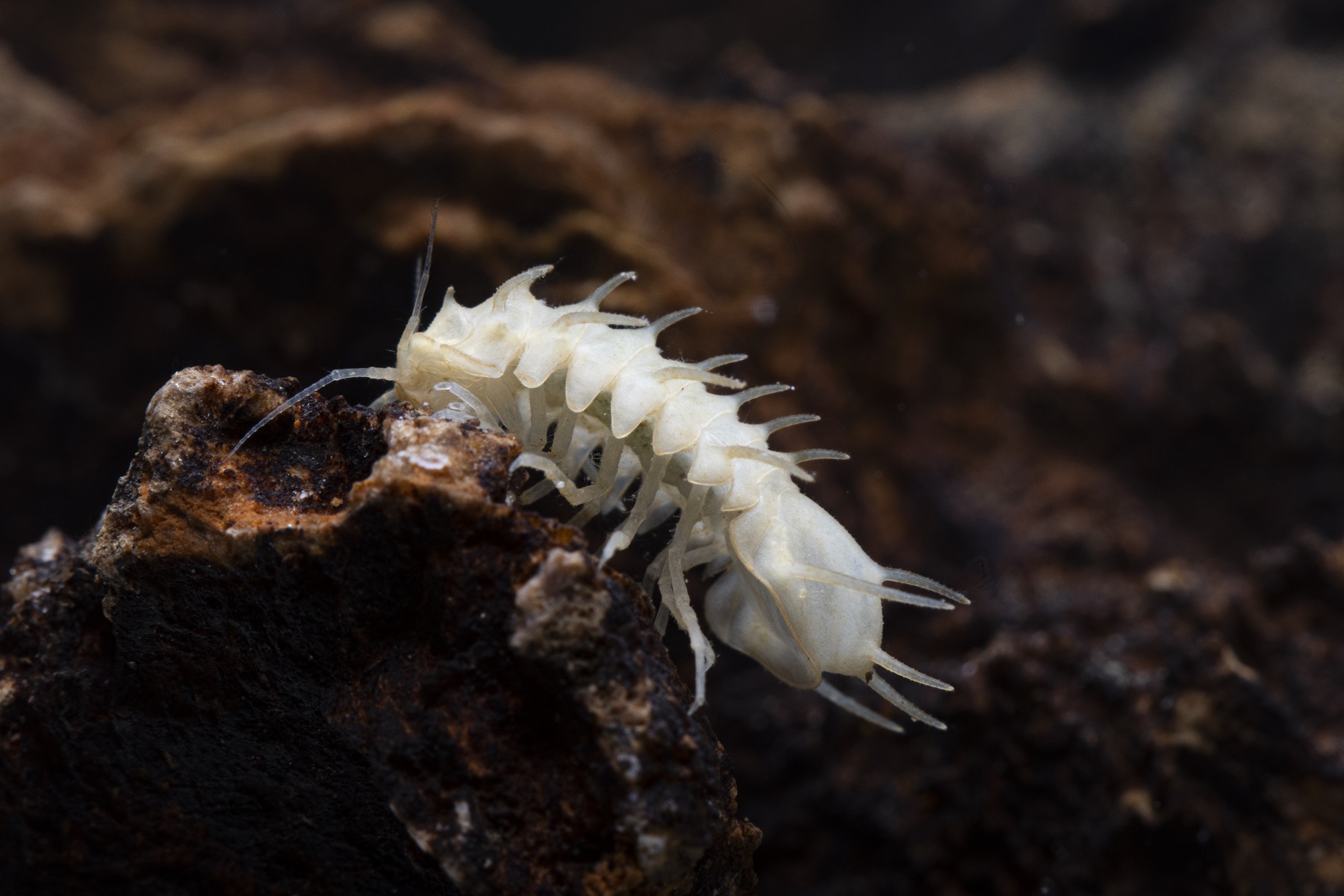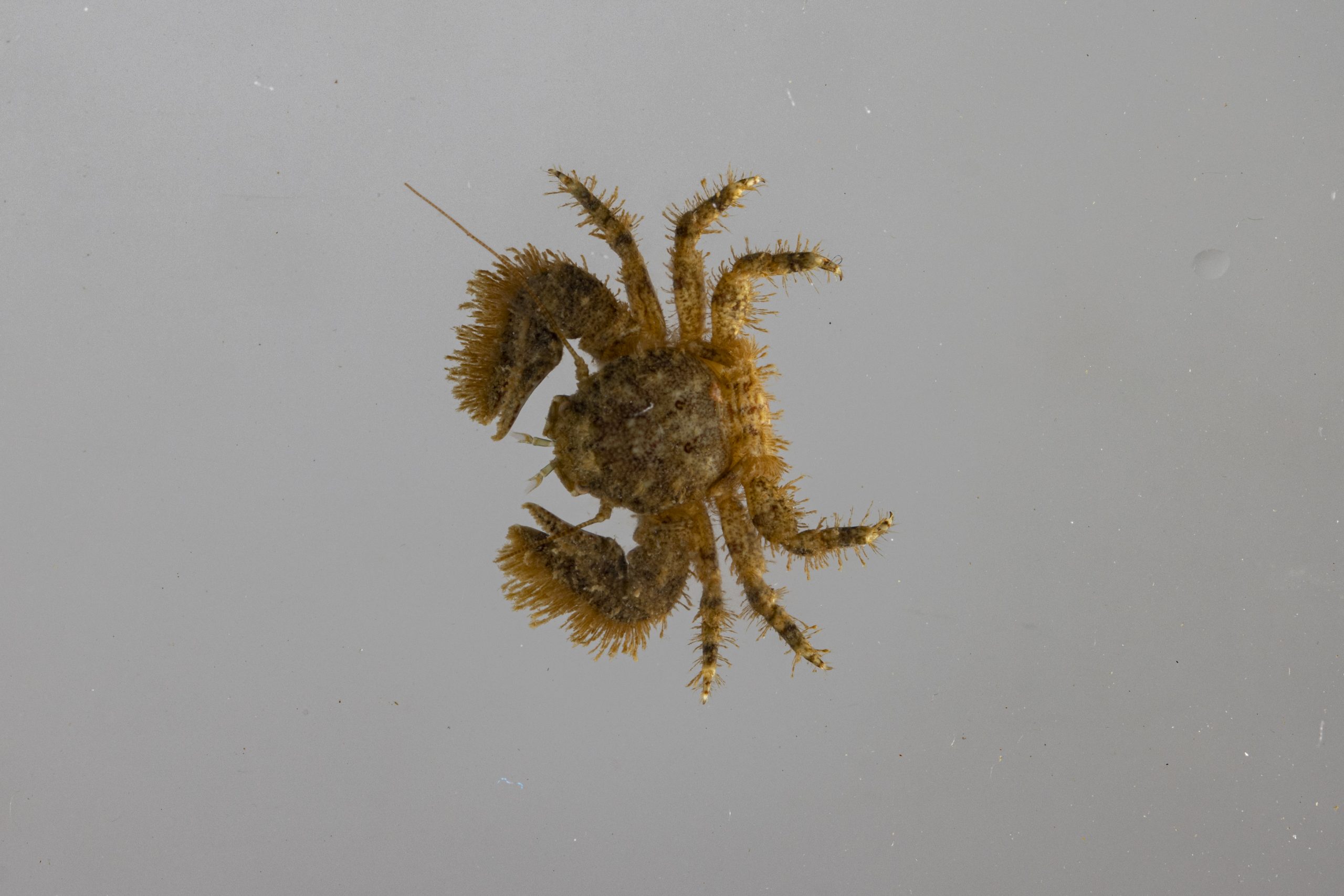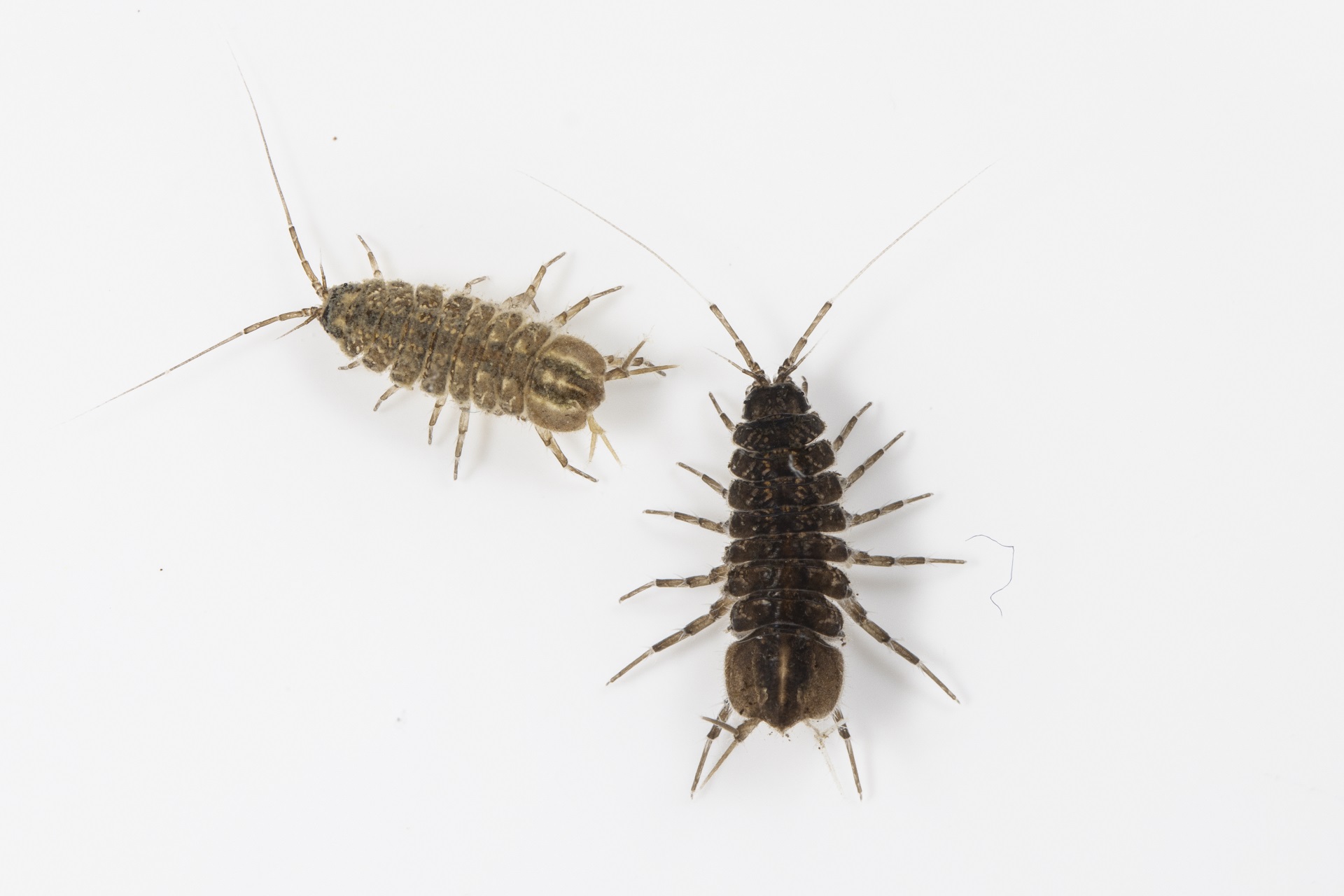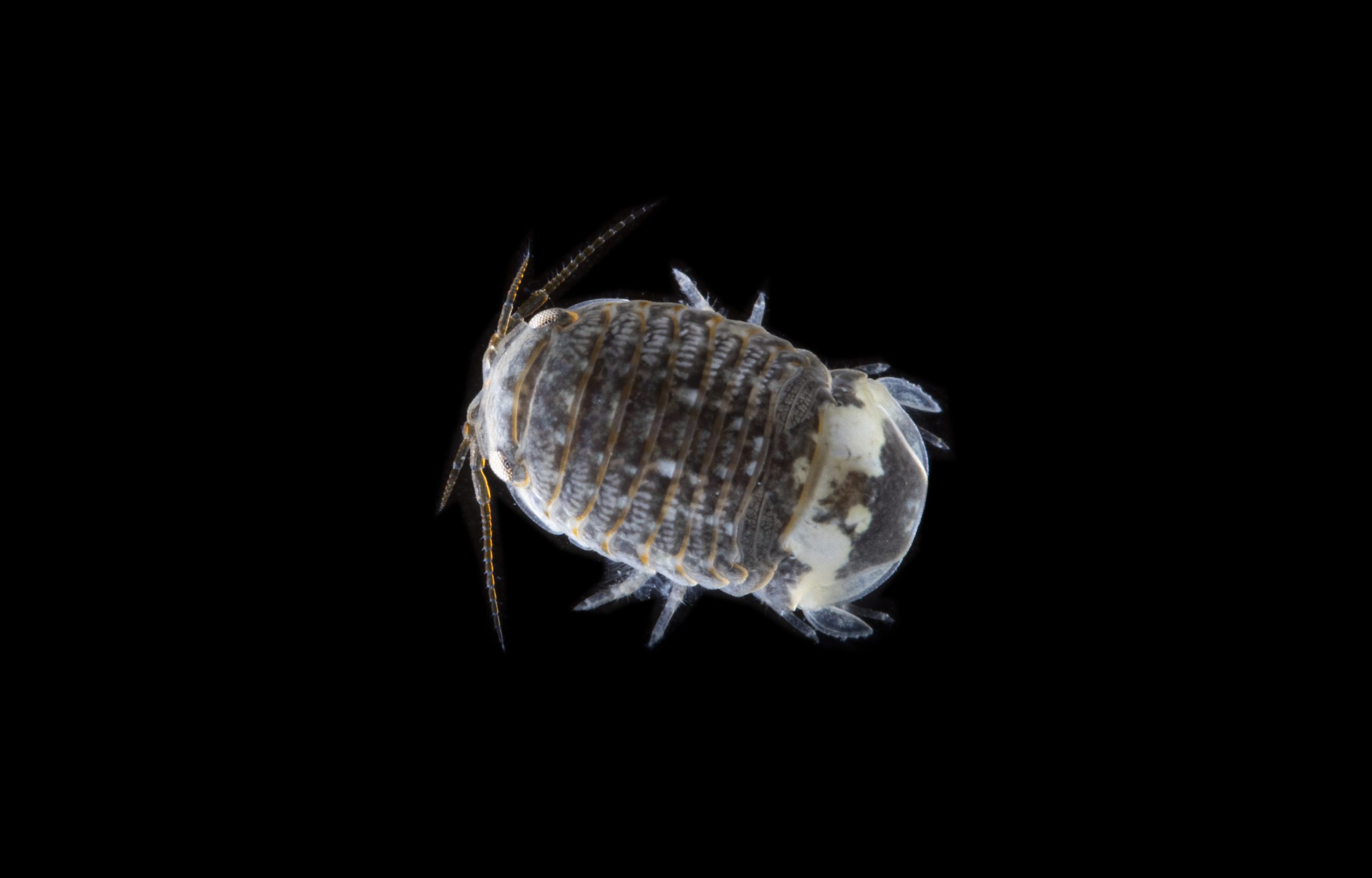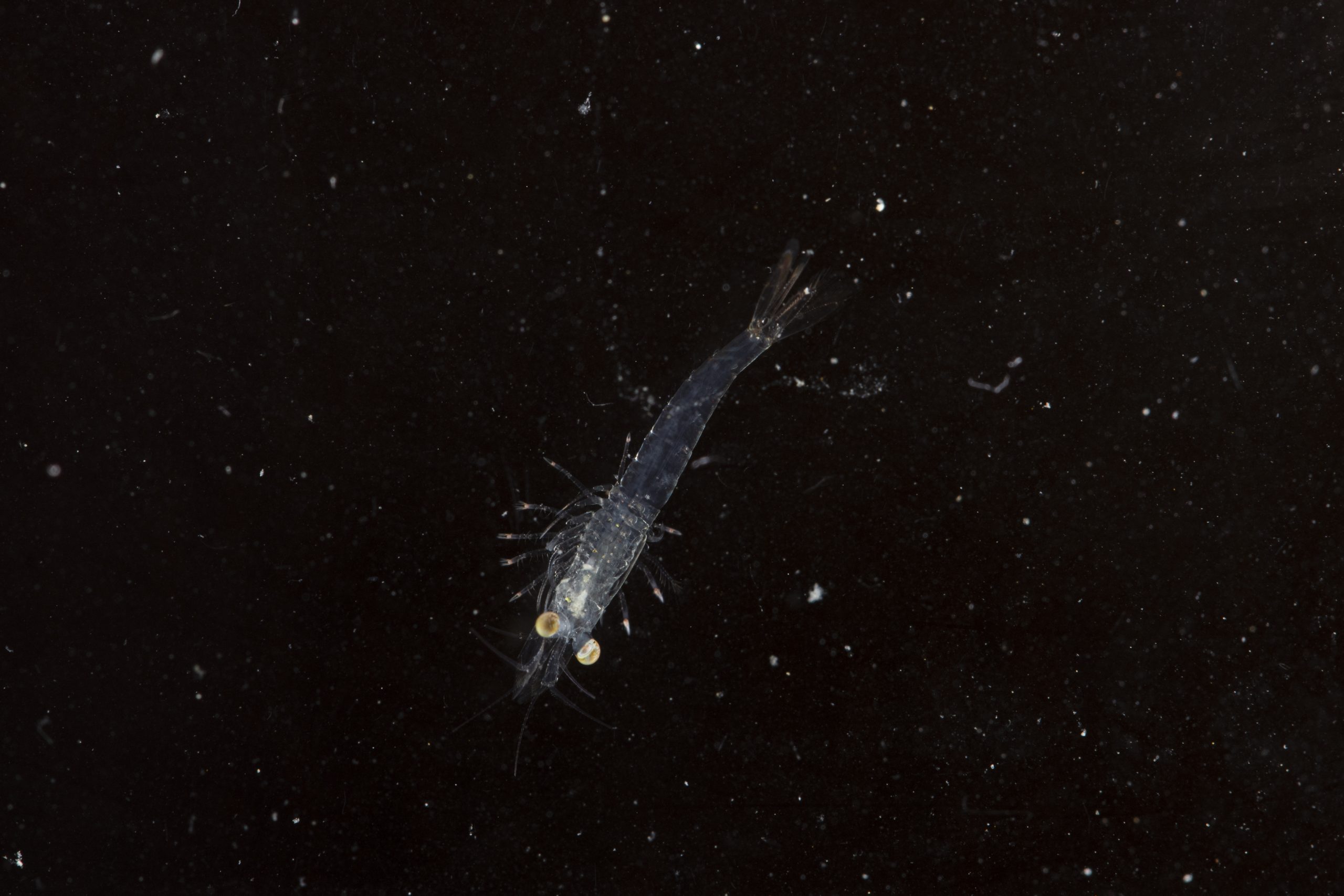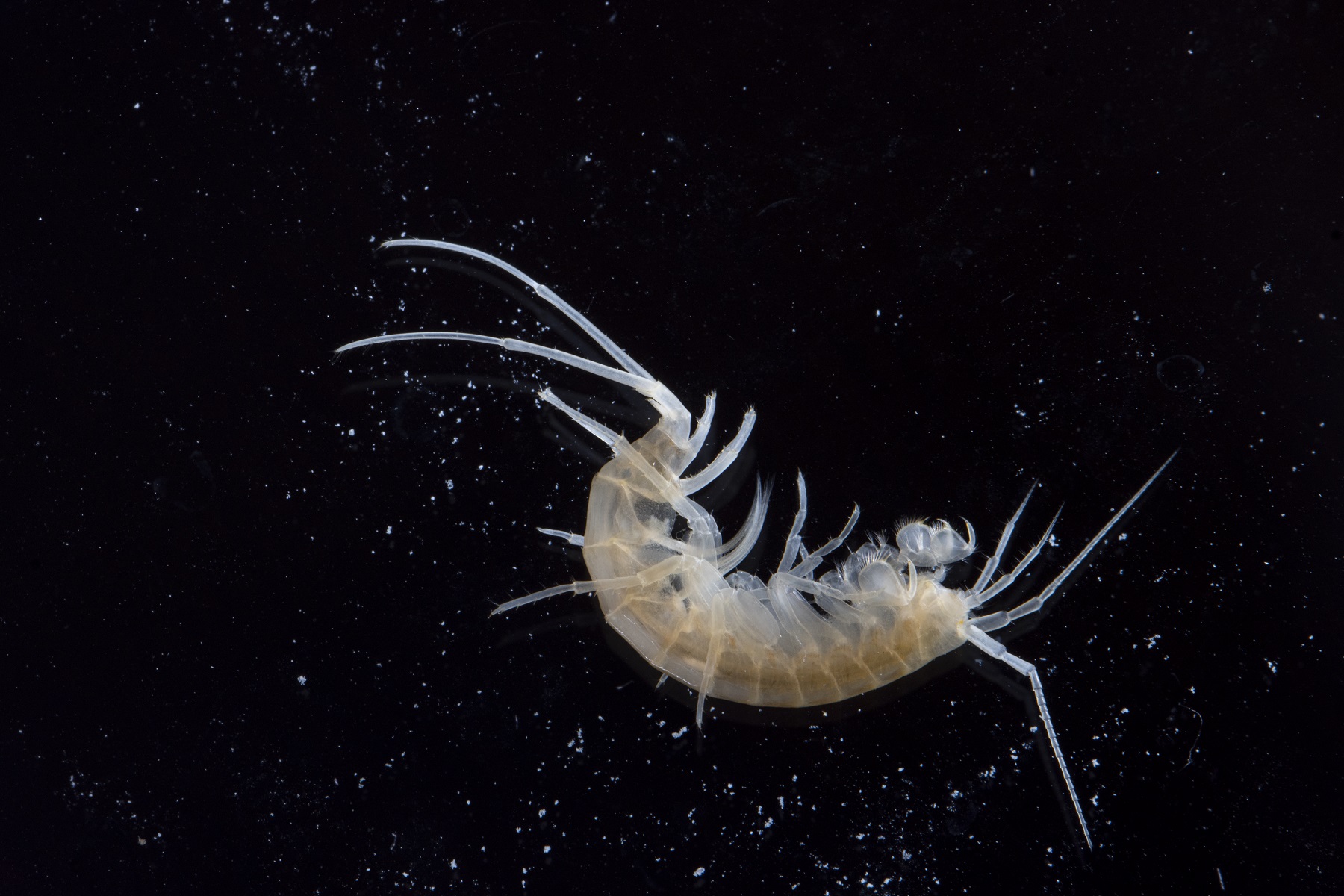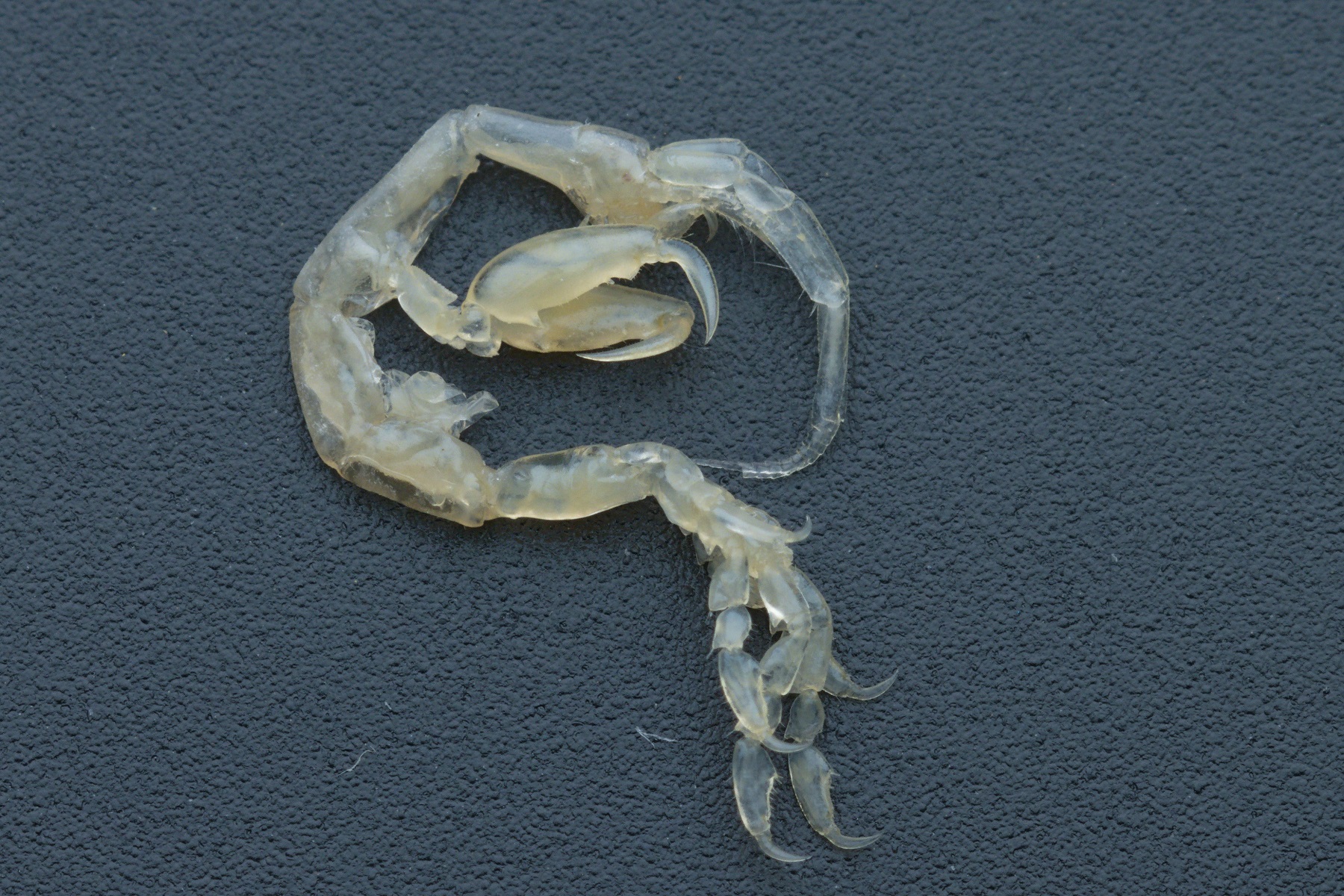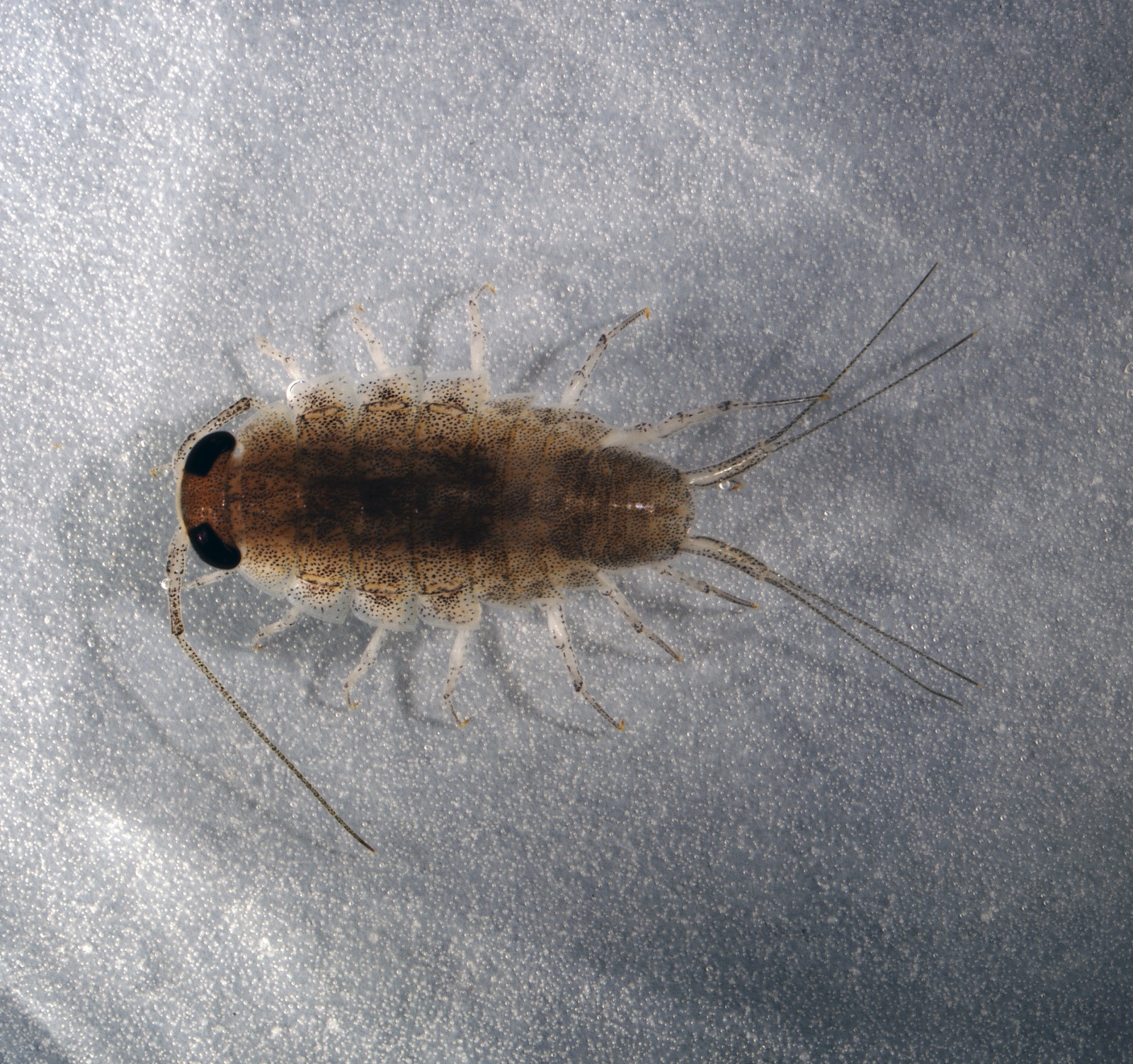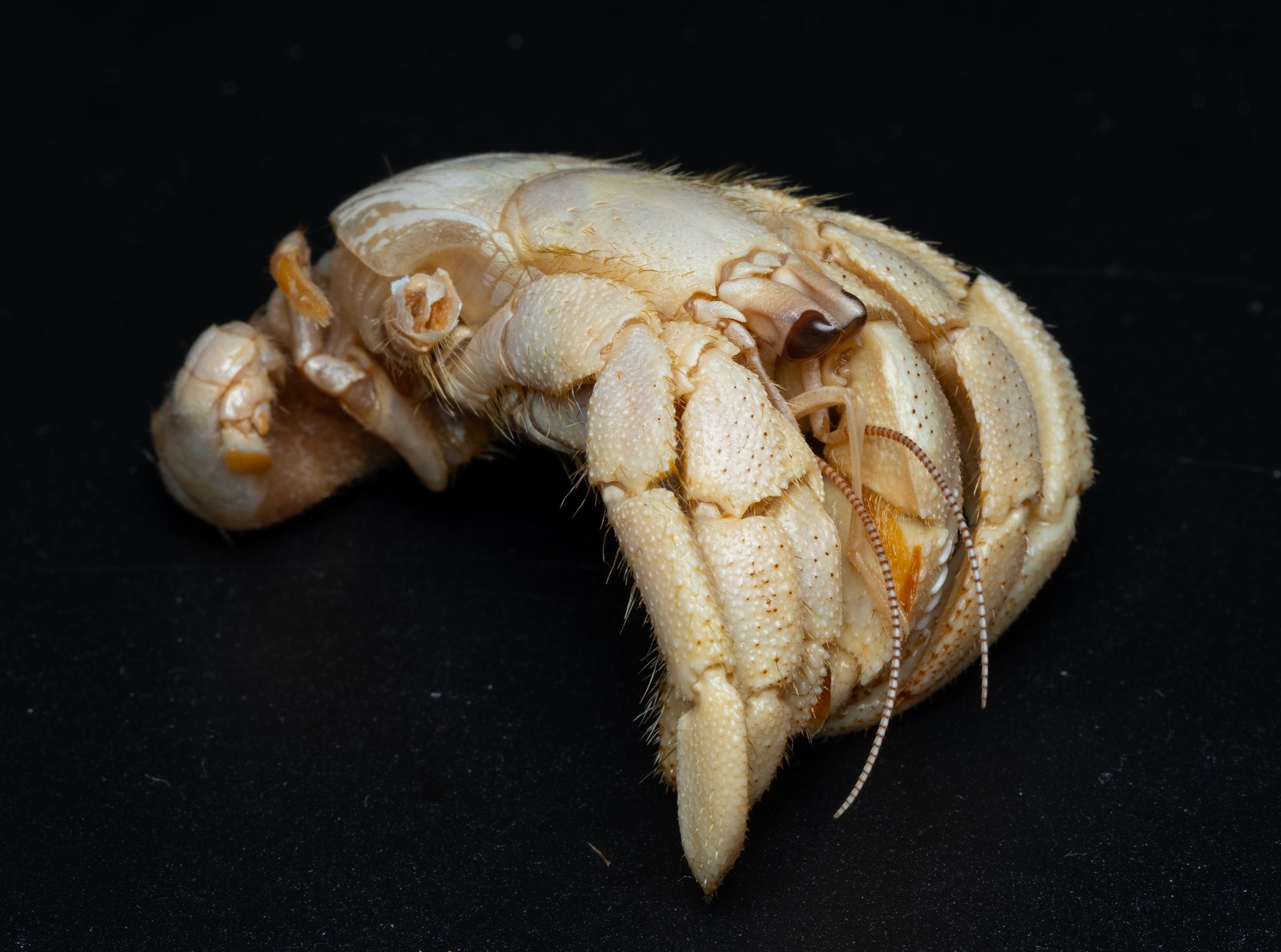- Crustaceans
Chirocephalus spp.
The genus Chirocephalus belongs to the order of fairy shrimps (Anostraca) and contains a little over 50 similar species. Two species are present in Slovenia, namely C. croaticus and C. diaphanus. The body is elongate and in most species it does not exceed three centimeters in length. Both species present in Slovenia reach one and a half centimeters at most. They are transparent with parts of the body in hues of brown, green, blue, and pink. The body consists of a head (cephalon), thorax and pleon (abdomen). Head segments are fused while the thorax and abdomen are clearly metamerically segmented, indicating the ancient origin of these animals. The carapace is absent, and the exoskeleton is thin and soft.
The head consists of an acron and first five body segments. A pair of stalked compound eyes and a single median naupliar eye are located on the head. The head also bears two pairs of antennae. Antennae I are short, while antennae II are long and sexually dimorphic. In males they are enlarged and modified for grasping the female during mating. Mouthparts comprise a pair of mandibles, a pair of maxillae I and a pair of partially reduced maxillae II.
The thorax consists of eleven segments (thoracomeres), each carrying a pair of thoracic appendages (thoracopods). These are biramous, leaflike, and armed with setae. The exoskeleton of thoracic appendages is very thin, and the support is mainly provided by the turgor of the body fluid. The thoracopods are used for respiration, swimming and feeding. A ventral channel, located medially between the thoracopods, plays an important role in these functions as well.
The abdomen consists of eight posterior body segments (pleomeres) and a telson. Lacking appendages, the abdomen resembles “a tail”. The first two abdominal segments are fused and carry a genital opening (gonopore), a pair of penes in males and an ovisac in females. The telson is bifurcated into a caudal furca and is used for steering during swimming.
Fairy shrimps of genus Chirocephalus have a palearctic distribution and are present in Europe, Asia, and North Africa. C. diaphanus is distributed throughout Europe, while C. croaticus is endemic to Croatia and Slovenia, with probably the last large population in Lake Petelinje. Anostracans generally thrive in various extreme environments. Such are also both Slovenian species, which can be found in different ephemeral freshwater bodies, where they are without competitors for food sources and safe from fish predation. They inhabit intermittent lakes, ponds, and puddles in karstic terrain or in mountains. In such environments the water is present only for a short part of the year, since it drains into the underground and evaporates during summer in karst or freezes during winter in the mountains. Anostracans are well adapted for difficult environmental conditions. They have very resistant, desiccation-prone eggs, which they deposit into the sediment. Their lifecycles are short, usually taking less than three months, which makes them easy-to-miss in nature.
Two other anostracan species are present in Slovenia. Branchipus schaefferi has a similar distribution and inhabits similar habitats as C. diaphanus. The cosmopolitan brine shrimp, Artemia salina, lives in saline lakes and salt evaporation ponds. In Slovenia it is present only in Sečovlje Salt Pans. The brine shrimp is adapted to a wide range of salinities and can survive in water of six times greater salinity than the salinity of the Mediterranean Sea. In favorable conditions it reproduces parthenogenetically and occurs in high numbers. At that time the water turns pinkish due to the carotenoid pigments they contain and obtain from algae they feed on. Flamingoes that feed on brine shrimp consequently acquire pink coloration of their plumage. The brine shrimp eggs can be obtained from pet shops and are relatively easy to rear up to nauplii (larvae) stage, which are a good food source for fish and other aquarium animals.
Anostracans generally swim with the ventral side up and only rarely rest on the bottom. They swim smoothly with metachronal beating of their thoracopods. When in danger they can evade in a jump like fashion with contractions and extensions of the whole body. They are filter feeders, generating a water current with their leaflike thoracopods through the ventral channel between them and catching plankton and detritus on the setae. During mating the male grabs a female with his second antennae. A pair then swims together often for a few hours, until the male finally fertilizes the female.
More photos
Related arthropods

Authors
- Urban Bogataj,
- Gregor Bračko,
- Teo Delič,
- Cene Fišer,
- Žiga Fišer,
- Rok Kostanjšek,
- Rudi Verovnik,
- Miloš Vittori,
- Valerija Zakšek.
Students Vito Ham, Vesna Jurjevič, Gaj Kušar, and Adrijan Samuel Stell Pičman also participated in the project.
